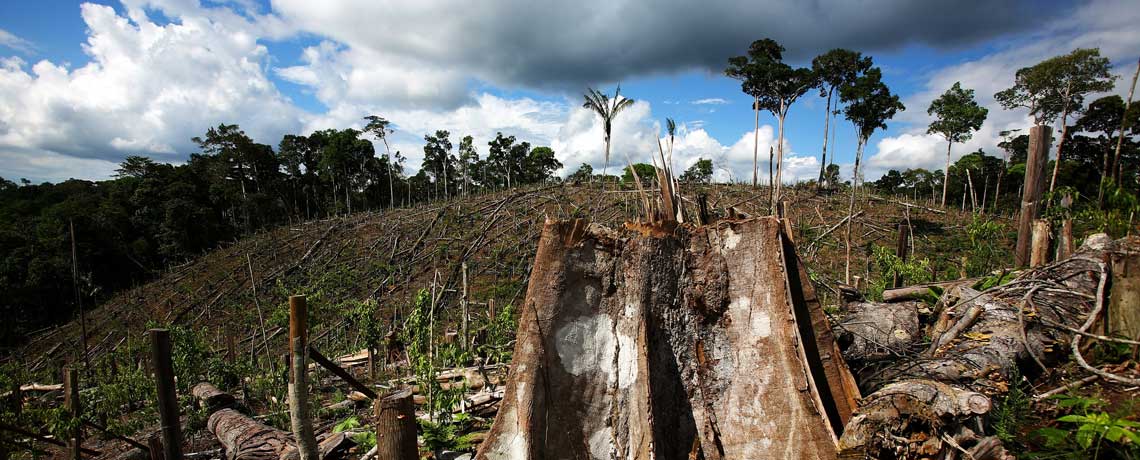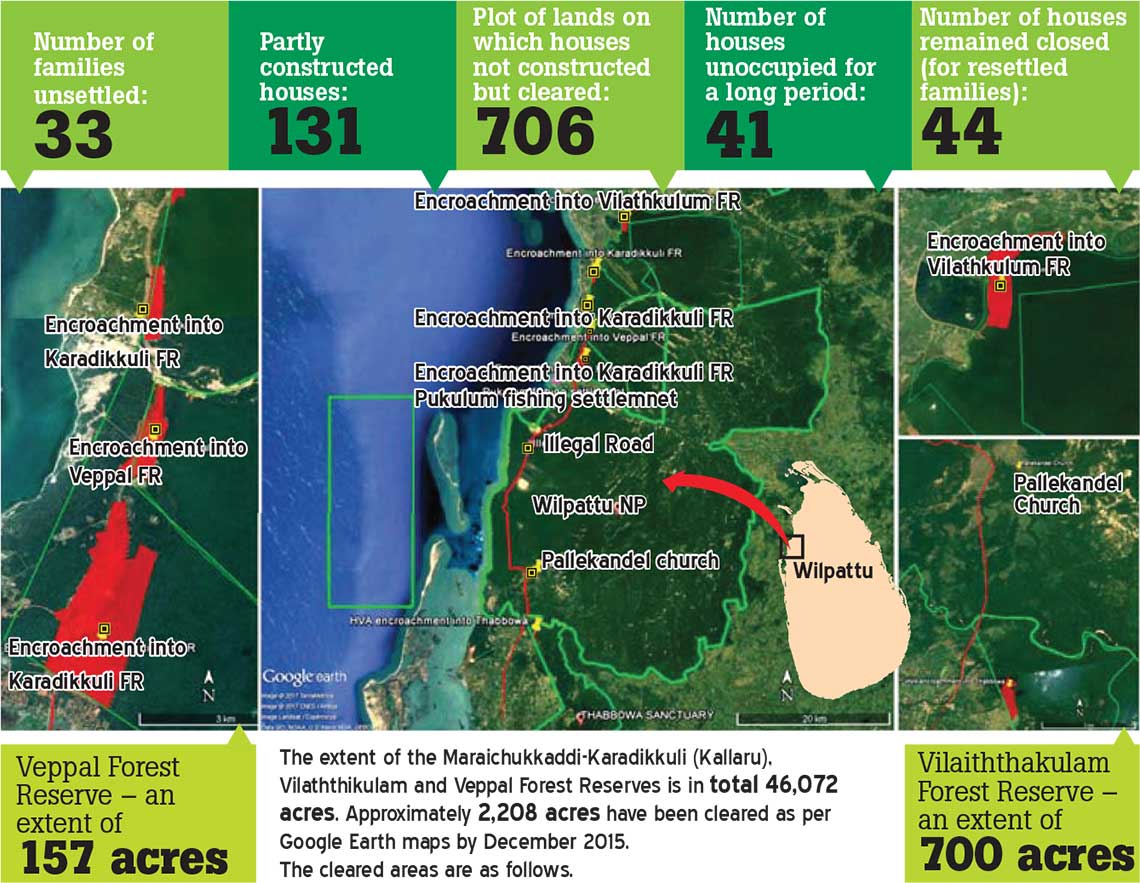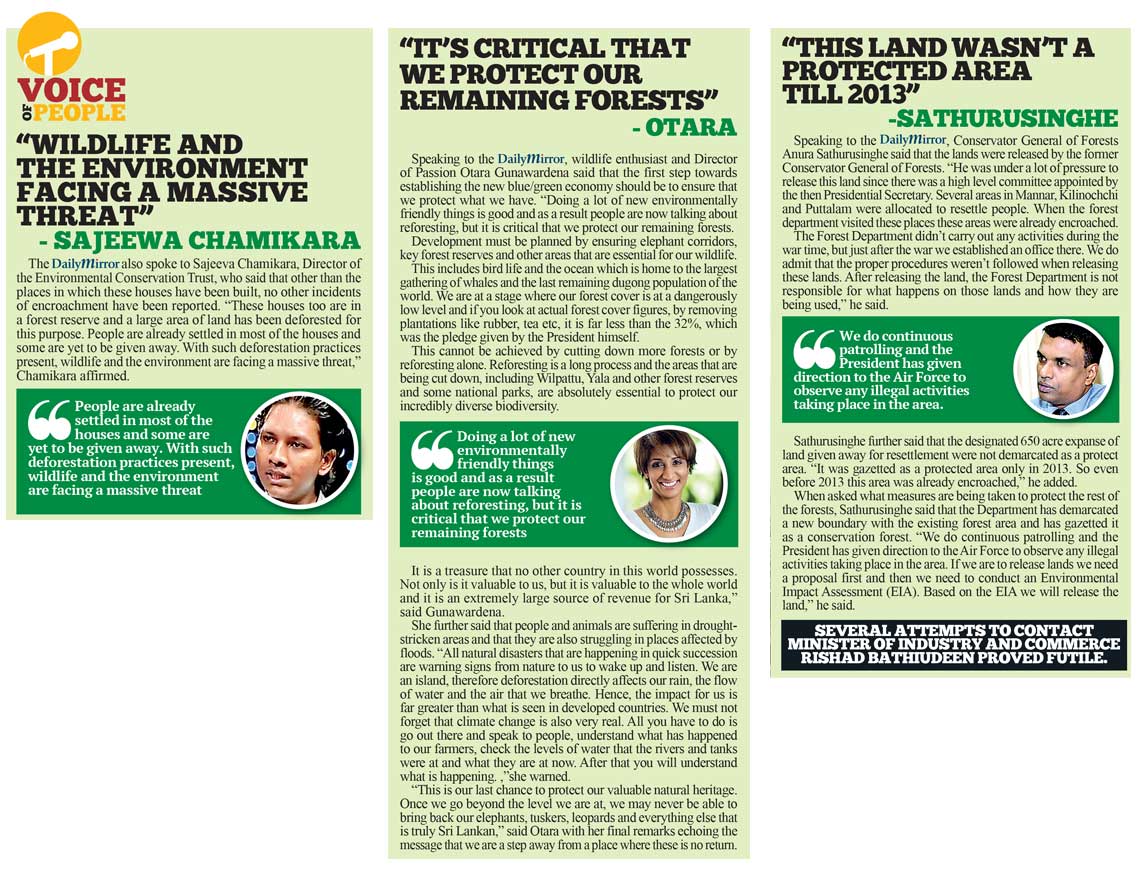02 Jan 2018 - {{hitsCtrl.values.hits}}

Carrying out resettlement projects around the Wilpattu National Park has proved to be a short-sighted, unsuccessful decision
 Changing ecosystems have become a tough challenge to face. While there’s a need to restrict global warming, increasing population figures and other external factors prevent these attempts. Although Sri Lanka has numerous national parks, forest reserves and sanctuaries- protected under various acts and ordinances- these areas too have faced various man-made threats. As deforestation became a major concern with the approaches taken to settle illegally around the Wilpattu National Park, the weak laws and acts printed in statute books remained unchanged. On another contradictory note, Sri Lanka also signed the Paris Agreement for Climate Change in April 2016 thus joining a list of countries to follow an action plan to reduce greenhouse gas emissions.
Changing ecosystems have become a tough challenge to face. While there’s a need to restrict global warming, increasing population figures and other external factors prevent these attempts. Although Sri Lanka has numerous national parks, forest reserves and sanctuaries- protected under various acts and ordinances- these areas too have faced various man-made threats. As deforestation became a major concern with the approaches taken to settle illegally around the Wilpattu National Park, the weak laws and acts printed in statute books remained unchanged. On another contradictory note, Sri Lanka also signed the Paris Agreement for Climate Change in April 2016 thus joining a list of countries to follow an action plan to reduce greenhouse gas emissions.
Hence, the sheds light on the current situation at the Wilpattu National Park and threats identified due to massive deforestation practices.

Wilpattu National Park
The Wilpattu National Park has been in the news for the past couple of years due to the rapid deforestation practices that took place in its surrounds. Forest reserves including Kallara, Madu and Periyamadu were severely deforested for these purposes. A petition filed against these practices stated that a vast area of 2000 hectares in the forest complex adjoining the Wilpattu National Park has been cleared in addition to another 1000 hectares in several other forest reserves. Upon clearing, 1500 families were allegedly settled by Minister of Industry and Commerce Rishad Bathiudeen under the pretext of resettlement for internally-displaced people.
Currently, 650 acres of land have been cleared to resettle people and it has been found that 706 plots of land have been cleared while 131 houses are partly being constructed.
Evidence-based scientific research has clearly shown that forests and forested watersheds play a crucial role in mitigating natural disasters. Forests therefore act as giant sponges, absorbing rainfall, thus ensuring a sustained supply of water during the dry season. Therefore with deforestation and other malpractices, droughts and floods should be expected.
Vehicles travelling at unregulated speeds and killing wild animals, haphazard dumping of polythene and other forms of garbage and people alighting from vehicles to engage in illegal activities are some of the threats that have been identified
Threats identified by EFL
According to the research conducted by Environmental Foundation Limited (EFL), a non-profit public interest law group committed to securing Sri Lanka’s environmental rights, several threats have been identified. They include:
There is evidence to show that the Forest Department recommended the release of 770 acres and a 650 acres land, but procedures were not followed for the releasing of these lands.

No deeds for houses
The learned that many houses have already been built within two kilometres of the buffer zone at the Wilpattu National Park. In his comments, Chamath Lakshman, Park Warden at the National Park said that the houses have been built within the Kallara Forest Reserve. Although people have settled in these houses they do not possess deeds. “Some of the houses are yet to be given away to the people, but right now most of them (houses) look as if they have been abandoned altogether,”he said.

23 Dec 2024 20 minute ago
23 Dec 2024 29 minute ago
23 Dec 2024 29 minute ago
23 Dec 2024 2 hours ago
23 Dec 2024 3 hours ago